Diane Keaton, star of Annie Hall and First Wives Club, dies at 79
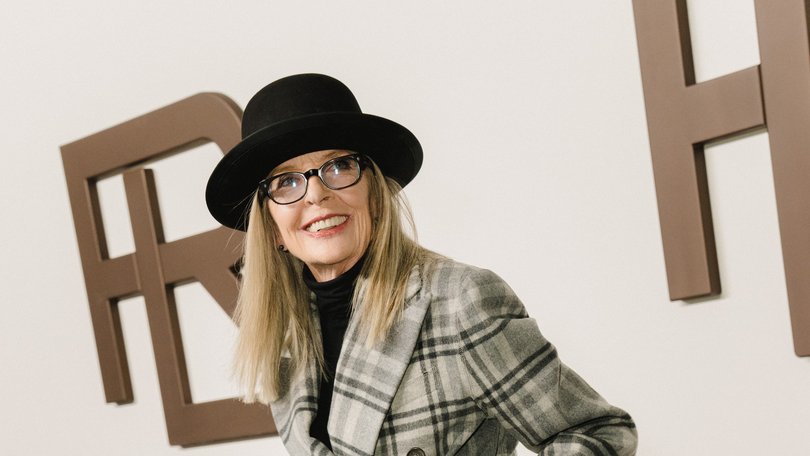
Diane Keaton, the vibrant, sometimes unconventional, always charmingly self-deprecating actress who won an Oscar for Woody Allen’s comedy Annie Hall and appeared in some 100 movie and television roles, an almost equal balance of them in comedies like Sleeper and The First Wives Club and dramas like The Godfather and Marvin’s Room, has died. She was 79.
Her death was confirmed by Dori Rath, who produced a number of Keaton’s most recent films. She did not say where or when Keaton died or cite a cause.
Keaton was 31 and a veteran of eight films, most of them comedies, when she starred as the title character in Annie Hall (1977), a single woman in New York City with ambitions, insecurities and definite style.
Sign up to The Nightly's newsletters.
Get the first look at the digital newspaper, curated daily stories and breaking headlines delivered to your inbox.
By continuing you agree to our Terms and Privacy Policy.Annie is known for cheerful psychiatric breakthroughs, fashions that look like menswear, questionable driving skills and lingering hints of an all-too-wholesome Midwestern upbringing.
She accepted her Oscar wearing a linen jacket, two full linen skirts, a scarf over a white shirt and black string tie, and high heels with socks. In her 2014 memoir, Then Again, she looked back on the moment, with some regret, as “my ‘la-de-da’ layered get-up.”
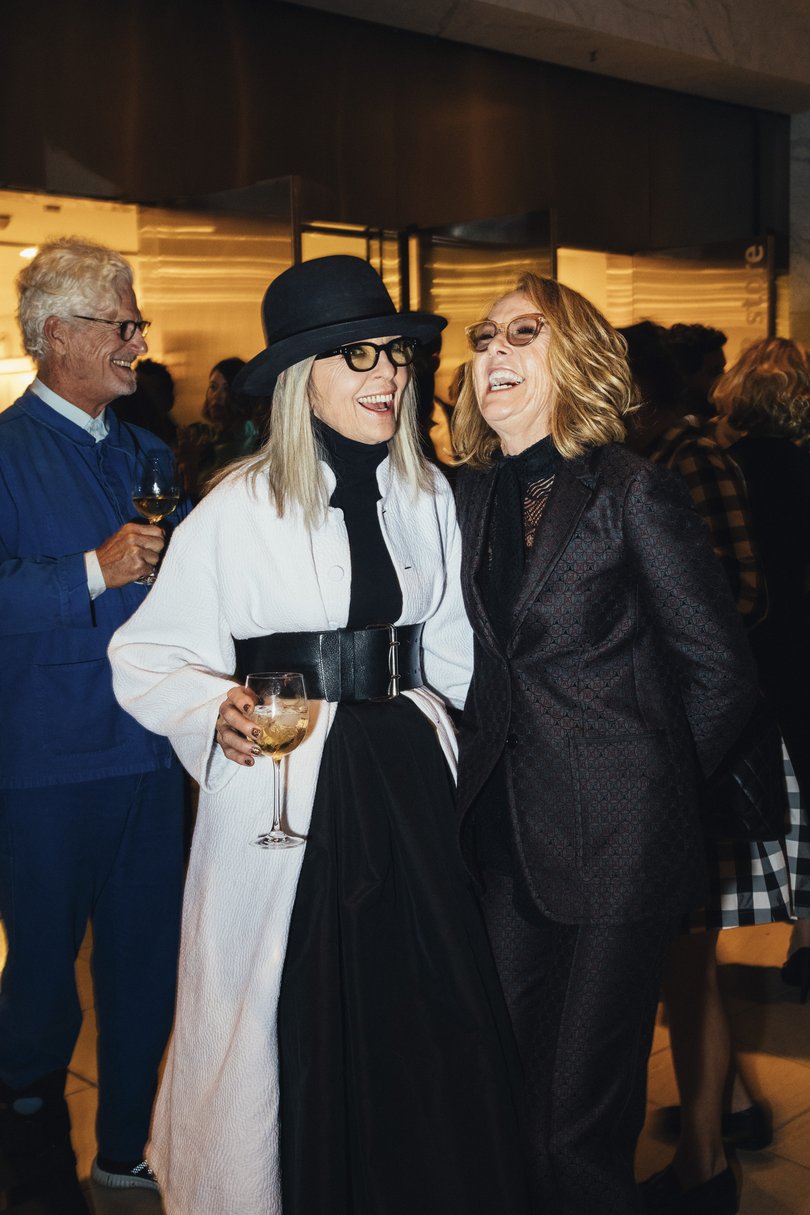
Annie Hall, which won three other Oscars including best picture, brought Keaton a shower of additional honours, including acting awards from the National Board of Review, National Society of Film Critics, New York Film Critics Circle and the British Academy of Film and Television Artists.
The Hollywood Reporter’s review of the movie called Keaton “the consummate actress of our generation” and observed that she “adds the charm and warmth and spontaneity” that make Annie Hall plausible.
Keaton received three other Oscar nominations. One was for the sweeping Oscar-winning drama Reds (1981), in which she played Louise Bryant, an intense 1910s writer hanging out with Greenwich Village socialists and Bolshevik revolutionaries, notably activist journalist Jack Reed (Warren Beatty, who directed).
Another was for Marvin’s Room (1993), in which she played the selfless daughter who is taking care of her slowly dying father and her scatterbrained aunt when she receives a diagnosis of leukaemia and needs a bone-marrow transplant.
Her co-stars included Meryl Streep, Leonardo DiCaprio and Hume Cronyn.
The third was for Something’s Gotta Give (2003), a comedy about a successful playwright who turns an extremely tearful breakup into a new hit comedy.
She attracts the attentions of a handsome, much younger doctor (Keanu Reeves) and inspires a sexist man in his 60s (Jack Nicholson) to fall in love with a woman his own age.
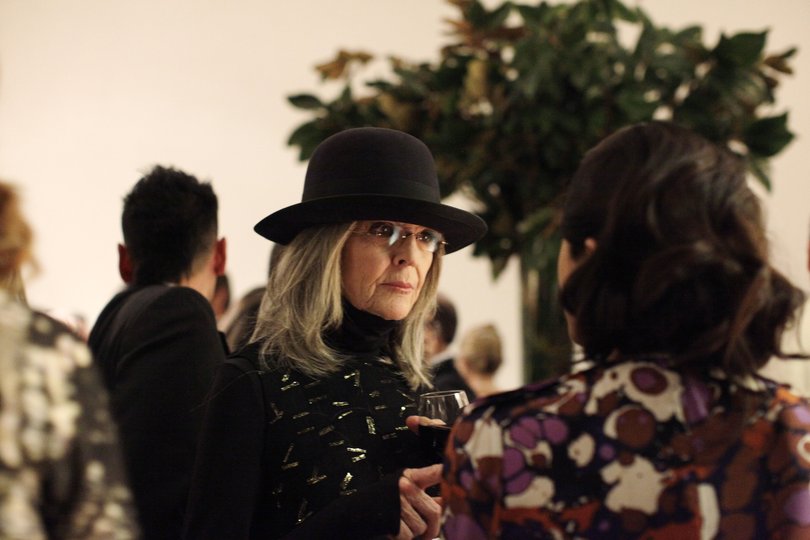
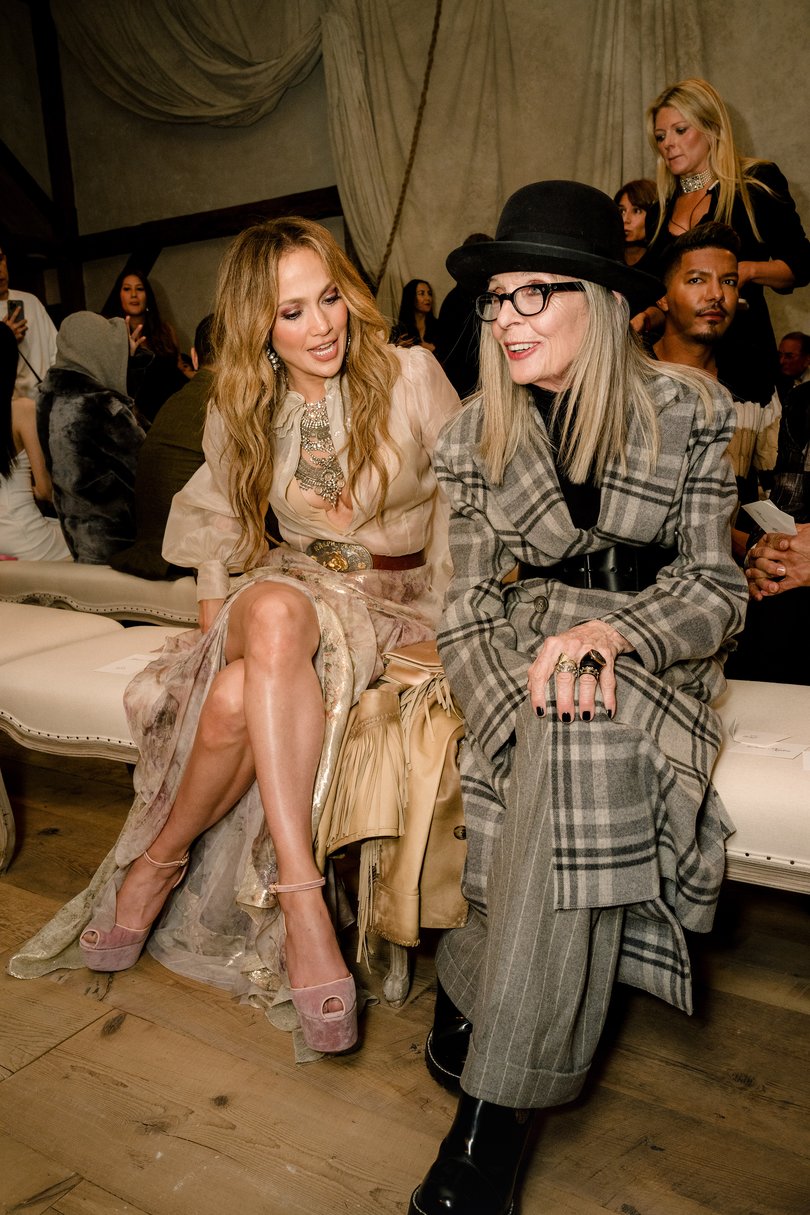
Keaton was also a director. Her first film was Heaven (1987), a documentary on beliefs about the afterlife. In her last, she directed herself, Meg Ryan and Lisa Kudrow in the comic drama Hanging Up (2000), based on a novel by Delia Ephron.
Unstrung Heroes (1995), her first foray into fictional filmmaking, starred Andie MacDowell, John Turturro and Michael Richards.
The story of a teenage boy’s idiosyncratic uncles was selected for Un Certain Regard, the prestigious sidebar at the Cannes Film Festival.
The Rolling Stone review said, “The movie works like a charm.” The Washington Post called it “sweet madness,” a “sensitive coming-of-age story.
A film career was always Keaton’s goal. She explained her aversion to theatre as a lifelong pursuit on CBS Sunday Morning in 2010. “Night after night? Doing a play?” she said, putting an imaginary gun to her head. “That’s my idea of hell.”
Diane Hall was born on January 5, 1946, in Los Angeles. She was the eldest of four children of John Newton Ignatius Hall, known as Jack, a civil engineer, and Dorothy Deanne (Keaton) Hall, an amateur photographer who was also crowned Mrs Los Angeles in a beauty pageant for homemakers.
Keaton’s father gave her the nickname Perkins and often addressed her as “Di-annie,” Keaton wrote in her memoir.
She grew up in Santa Ana, California, near Los Angeles, and briefly attended community colleges, first Santa Ana and then Orange Coast. At 19, she dropped out and moved to New York to study acting at the Neighbourhood Playhouse.
She made her Broadway debut in the hit musical Hair, first as a member of the ensemble and then as Sheila, the female lead. (She turned down the $50 bonus offered to actors who were willing to appear nude in one scene.)
Her Broadway career continued and her partnership with Allen began with Play It Again, Sam (1969), in which she played a romantically desirable married woman opposite Allen as a nebbishy divorced friend. That performance earned her a Tony Award nomination for best featured actress in a play.
Her film debut came the next year, when she played an unhappy young wife at a suburban wedding in Lovers and Other Strangers (1970), then, after a handful of television appearances, she played Kay Adams, the clearly non-Sicilian girlfriend turned trusting wife of Michael Corleone (played by Al Pacino), in Francis Ford Coppola’s The Godfather (1972). (She and Pacino began dating in 1974, the year The Godfather, Part II was released.)
For all the acclaim that The Godfather drew, Keaton, ever self-effacing, hardly raved about her own performance in it.
“Right from the beginning I thought I wasn’t right for the part,” she told The New York Times after the movie was released.
“I haven’t seen the film. I just decided I would save myself the pain. I had to see a few scenes because I had to loop — dub in some dialogue — and I couldn’t stand looking at myself. I thought I looked so terrible, just like a stick in those ’40s clothes!”
Three years later, the same year Annie Hall was released, she starred in the wrenching drama Looking for Mr Goodbar as a young teacher who prowls singles bars almost every night.
Molly Haskell’s review in New York magazine called Keaton’s “the performance of a lifetime” and the movie itself “harrowing, powerful, appalling.”
Some observed that although she won the Oscar for Annie Hall, many voters had been influenced by Mr Goodbar which they considered brilliant but too hard to take.
She appeared regularly in Allen’s films, starting with the movie version of Play It Again, Sam (1972); Sleeper (1973), a comedy set in a dystopian future; and Love and Death (1975), set in czarist Russia.
She also starred in two of Allen’s more serious contemporary films, Interiors (1978) and the multiple-award-winning Manhattan (1979).
Although she dismissed her early singing ambitions as foolish, she sang two numbers in Annie Hall and made a cameo appearance as a 1940s nightclub singer in Allen’s Radio Days (1987). Their last film together was Manhattan Murder Mystery (1993).
In addition to Reds, Marvin’s Room and the sequels to The Godfather (1974 and 1990), she starred in several other dramas, some with satirical undertones.
They included Shoot the Moon (1982), in which she co-starred with Albert Finney, the story of an unhappy California couple and their divorce; Beth Henley’s Southern Gothic Crimes of the Heart (1986), playing the spinster sister of Jessica Lange and Sissy Spacek; and the miniseries The Young Pope (2016), as a nun who is personal secretary and confidant to the pope, played by Jude Law.
But her talent for sophisticated farce didn’t go to waste. Before Something’s Gotta Give, she appeared in three other comedies directed by Nancy Meyers: Baby Boom (1987), opposite Sam Shepard, as a big-city executive who inherits a baby and moves to Vermont; and Father of the Bride (1991) and its 1995 sequel, opposite Steve Martin.
Speaking at a comedy festival in Aspen, Colorado, in 2004, Meyers compared Keaton’s comedic skills to those of two big stars of an earlier generation, Katharine Hepburn and Jean Arthur. And Allen himself went even further.
“My opinion is that with the exception of Judy Holliday, she’s the finest screen comedienne we’ve ever seen,” he told the Times.
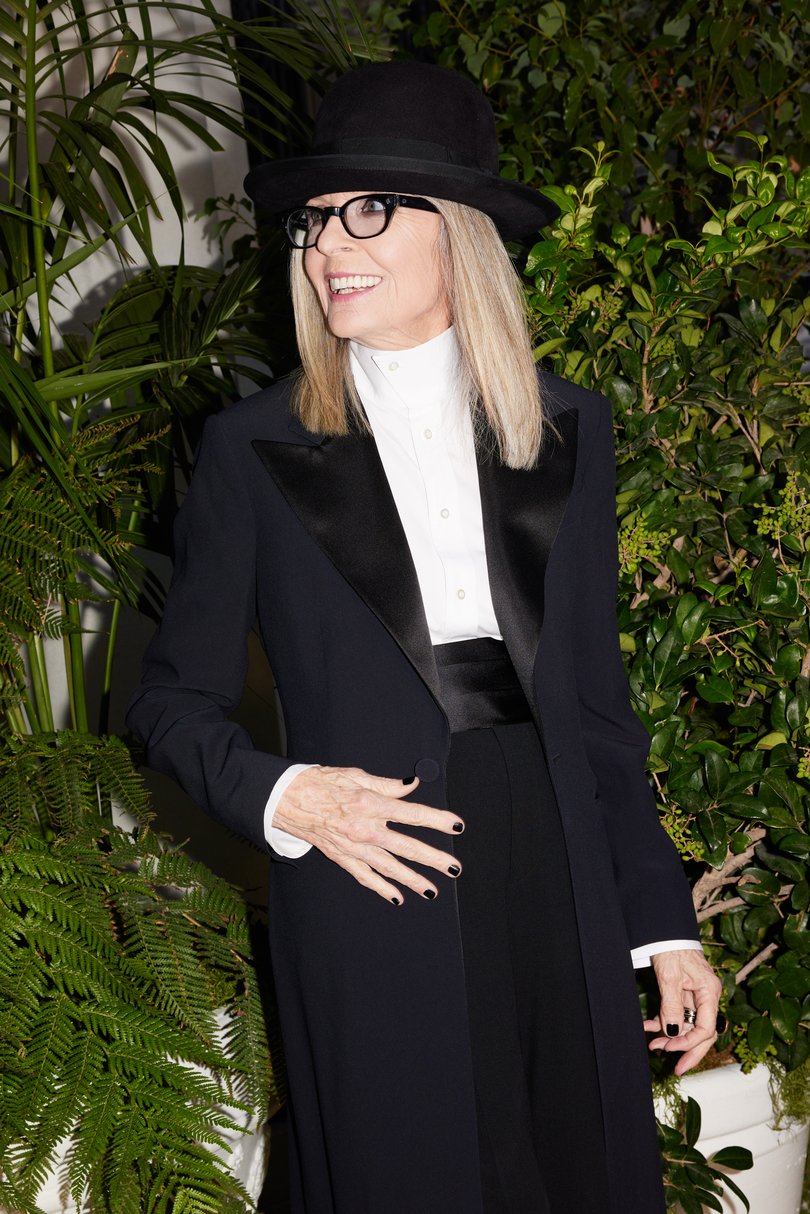
Keaton’s other comedy films included Harry and Walter Go to New York (1975), set in the 1890s, with James Caan and Elliott Gould; The Family Stone (2005), with an ensemble cast including Dermot Mulroney, Sarah Jessica Parker and Craig T. Nelson; 5 Flights Up (2014), opposite Morgan Freeman; and Poms (2019), about retirement-age cheerleaders.
The First Wives Club (1996), in which she starred with Goldie Hawn and Bette Midler, was a major box-office hit, a comedy of revenge — or justice, depending on your point of view.
Keaton’s character, for instance, learns that the therapist she has come to trust is actually having an affair with her estranged husband.
Her final film was Summer Camp (2024), a comedy about three old friends at an eventful reunion.
Keaton’s personal life could be fodder at times for the gossip pages as they tracked her romantic relationships, including with Beatty and Allen in addition to Pacino.
She never married and adopted two children, a son, Duke Keaton, and a daughter, Dexter Keaton. Complete information on her survivors was not immediately available.
“Getting older hasn’t made me wiser,” she told People magazine, with a typically self-critical eye, in 2019, insisting cheerfully, “I don’t know anything, and I haven’t learned.”
Over the years, though, she wrote a dozen or so books — volumes on fashion, art and architecture as well as memoirs. Writing in The New York Times Book Review in 2014, Sheila Weller called Keaton’s memoir Then Again “provocatively honest” and Keaton “bitingly wry, ironic and tough about herself.”
Then Again offered Keaton an opportunity to observe, “I learned I couldn’t shed light on love other than to feel its comings and goings and be grateful.”
It also gave her a chance to challenge an adage or two. “If beauty is in the eye of the beholder,” she wrote, “does that mean mirrors are a waste of time?”
This article originally appeared in The New York Times.
© 2025 The New York Times Company
Originally published on The New York Times
